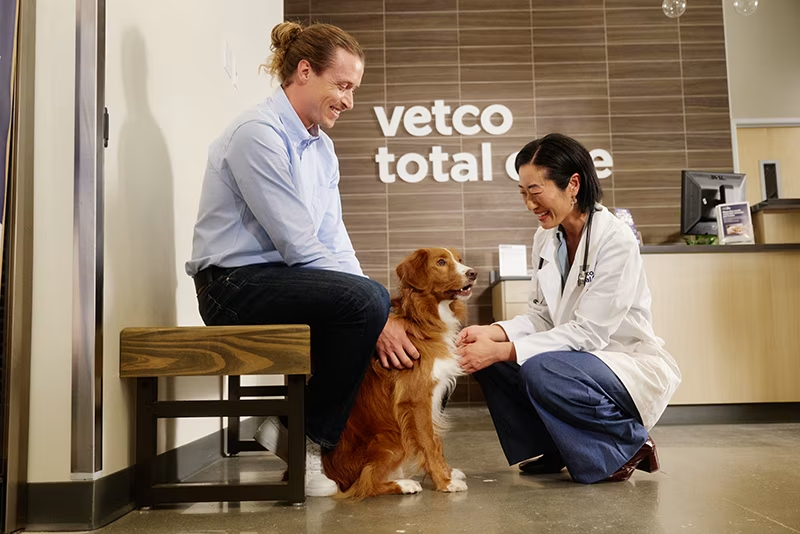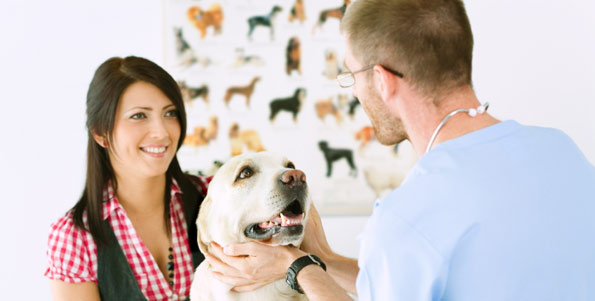Best Diet and Pain Relief Tips Post- tplo surgery for dogs
Best Diet and Pain Relief Tips Post- tplo surgery for dogs
Blog Article
Everything About Veterinarian Surgical Treatment: Recognizing the Significance of Professional Look After Your Pet dogs
Vet surgical treatment is a vital element of pet health care. It encompasses various treatments, from routine optional surgical treatments to urgent treatments. Recognizing the intricacies of these surgeries can assist family pet proprietors make educated choices. The prep work, execution, and healing stages are crucial for ensuring the well-being of pets. With correct knowledge, proprietors can browse the complexities of vet care. What aspects should be thought about before a family pet goes through surgical treatment?
Kinds Of Vet Surgeries
When a pet dog needs surgical treatment, comprehending the different types of veterinarian surgeries can help pet proprietors make informed choices. Vet surgical procedures can be broadly classified right into 3 main types: optional, immediate, and emergency situation surgeries. Elective surgical treatments, such as spaying or neutering, are intended procedures that are not promptly lethal. Immediate surgical treatments, like those for foreign body removal, must be performed soon yet are not deadly in the moment. Emergency situation surgical treatments, such as those dealing with severe trauma or internal bleeding, are crucial and call for prompt attention.Additionally, surgeries can vary in complexity, ranging from minimally invasive laparoscopic treatments to a lot more extensive open surgeries. Each type of surgical procedure brings its very own risks and recuperation processes. Understanding these classifications allows family pet proprietors to participate in meaningful discussions with vets, causing far better outcomes for their beloved family pets.
Preparing for Your Pet's Surgery
Preparing for a pet's surgical treatment entails a detailed checklist to ensure all fundamentals are covered. Effective interaction with the vet is crucial for recognizing the procedure and any needed pre-operative actions - tplo surgery. In addition, having clear post-operative treatment instructions will certainly help proprietors supply the very best support for their recouping animals
Pre-Surgery Checklist Basics
Guaranteeing a smooth surgical experience for a pet dog needs careful prep work and attention to information. A pre-surgery checklist is crucial for family pet proprietors to comply with. Verifying the arranged surgical procedure day and time is vital. Proprietors need to additionally validate that their pet has actually not eaten according to the veterinarian's directions, generally for 8-12 hours prior to surgery. Collecting required medical documents, including vaccination history, is necessary for the veterinarian's testimonial. It is likewise recommended to prepare a comfortable room in your home for the pet's recuperation after surgical procedure. Proprietors need to have a plan for transportation to and from the veterinary facility, making sure that the family pet is safe and secure and comfy throughout the journey. Complying with these steps can significantly improve the surgical experience.
Interacting With Your Veterinarian

Efficient interaction with the veterinarian is important for a successful medical experience for pets. Owners must be prepared to discuss their pet's medical history, including any pre-existing problems, drugs, and allergies. This information aids the vet examine dangers and tailor the surgical plan appropriately. Additionally, animal owners need to ask concerns concerning the procedure, anesthetic, and anticipated outcomes to assure they fully recognize the procedure. Clarifying any type of doubts can reduce stress and anxiety for both the animal and the owner. It is also vital to communicate any type of behavior modifications or worries observed in the pet leading up to the surgical procedure. Inevitably, clear discussion cultivates trust and partnership, ensuring that pets get the very best feasible care throughout their surgical journey.
Post-Operative Treatment Instructions
After reviewing the surgical treatment with the veterinarian, pet dog owners need to concentrate on post-operative treatment directions to help with a smooth recovery for their family pets. These instructions usually include keeping track of the surgical site for indications of infection, such as redness or discharge. Pets might need to be kept one's cool and constrained to stop extreme motion that could interrupt recovery. Discomfort monitoring is crucial, so proprietors should follow the veterinarian's support on carrying out medicines. In addition, dietary limitations might be suggested to avoid stomach distress. Regular follow-up consultations are necessary to guarantee correct healing and resolve any type of issues. By adhering to these post-operative care guidelines, pet dog owners can considerably add to their animal's recuperation and total wellness.
The Surgery Explained
The surgical process for family pets incorporates important steps that guarantee their safety and security and recuperation. Pre-surgery preparations are crucial for reducing threats, while post-operative treatment guidelines play a crucial duty in promoting healing. Understanding these elements aids pet owners browse the medical experience better.
Pre-Surgery Preparations
Before an animal undergoes surgery, numerous crucial prep work need to happen to ensure a safe and effective procedure. An extensive veterinary exam is vital to examine the animal's total health and wellness and determine any type of potential risks. This may consist of blood examinations, imaging, or other diagnostics. The veterinarian will also discuss anesthetic alternatives customized to go to my blog the pet dog's specific demands. In addition, pet owners are typically instructed to hold back food and water for a specified time prior to surgical procedure to minimize the danger of complications during anesthetic. It is very important for owners to give a complete case history, including any type of drugs or allergies, guaranteeing the surgical group has all necessary information. Appropriate interaction and adherence to pre-surgery standards can significantly improve the end result of the treatment.
Post-Operative Treatment Standards
Appropriate post-operative treatment is crucial for guaranteeing a pet dog's recuperation following surgical treatment. After the treatment, pet dogs need to be kept track of very closely for any indicators of problems, such as too much bleeding, swelling, or unusual habits. It is necessary to comply with the vet's instructions relating to drugs, including discomfort reducers and anti-biotics. Pet dogs need to be maintained in a peaceful, comfy atmosphere to lower stress and advertise recovery. Restricting activity is vital; short, leashed walks might be needed, however jumping or running ought to be avoided. Normal follow-up visits should be arranged to evaluate the healing procedure. In addition, the medical site needs to be maintained clean and completely dry, with any signs of infection reported to a veterinarian promptly. Abiding by these standards improves healing end results.
Anesthesia and Pain Management
Effective anesthetic and discomfort administration are important parts of vet surgical procedure, making sure that pets continue to be comfortable and secure throughout the treatment. Vets examine each pet's specific demands, considering variables such as age, weight, health and wellness condition, and the kind of surgical treatment being performed.Anesthesia methods normally consist of a mix of pre-anesthetic medications, induction agents, and inhalant anesthetics, allowing for precise control over the animal's level of consciousness. Surveillance during surgical procedure is crucial; veterinarians constantly observe crucial indicators to resolve any type of prospective issues promptly.Pain monitoring methods might entail opioids, non-steroidal anti-inflammatory medicines (NSAIDs), and anesthetics, tailored to the animal's specific situation. This diverse approach assists minimize pain and advertises a smoother surgical experience. By focusing on effective anesthesia and pain monitoring, vet experts boost the overall well-being of pet dogs going through procedures, guaranteeing they obtain the highest standard of treatment.
Post-Operative Care and Recuperation
Following surgical procedure, the emphasis shifts to post-operative treatment and recovery, which is crucial for making certain a pet dog's secure return to regular activities. Throughout this duration, animals require a silent, comfy setting to aid healing. Owners should carefully monitor their pet dogs for any type of signs of discomfort or uncommon behavior.Veterinary standards commonly consist of specific directions associated with medicine management, injury treatment, and nutritional changes. It is essential to abide by these recommendations to reduce complications and advertise healing. Pet dogs may need to be restricted from strenuous tasks, such as running or leaping, throughout their healing period (emergency vet bellingham).Regular follow-up visits with the vet permit monitoring of the pet's progression and timely changes to the treatment plan. Offering emotional support and friendship can likewise enhance an animal's recovery experience, assisting to ease stress and anxiety and stress and anxiety. Overall, attentive post-operative care plays a considerable duty in attaining an effective healing
Identifying Complications After Surgical Treatment
How can animal proprietors determine issues after surgical procedure? Recognition of specific indications is essential for guaranteeing the well-being of pets during healing. Typical indications consist of extreme swelling, redness, or discharge at the medical site, which might symbolize infection. Furthermore, consistent pain, indicated by whimpering or reluctance to relocate, need to specialty vets near me motivate instant interest. Changes in hunger or water consumption can likewise suggest difficulties; a decline in these actions might signal discomfort or distress.Moreover, family pet owners should check their pet dogs for any kind of unusual actions, such as lethargy or difficulty breathing, as these can be signs of severe issues. Throwing up or looseness of the bowels adhering to surgery might require urgent veterinary assessment. Recognizing these issues early can significantly impact an animal's recovery procedure, stressing the importance of vigilance and prompt communication with a vet for any type of worrying signs and symptoms.
The Duty of Vet Experts in Surgical Treatment
Veterinary experts play an important duty in making certain the safety and security and success of surgeries for animals, especially following surgical treatment when keeping an eye on and care are extremely important. These experts include veterinarians, vet service technicians, and support personnel, all of whom add specialized skills to the surgical process.Before surgical procedure, veterinarians perform detailed evaluations to examine the pet dog's health, ensuring that any kind of underlying problems are taken care of. During the treatment, the surgical team offers anesthetic, preserves sterilized settings, and checks vital signs, very important for decreasing risks.Post-operative where's the closest veterinarian care is similarly significant; vet experts observe for difficulties, handle pain, and guide proprietors on healing practices. Their expertise enables them to recognize very early indicators of distress or infection, guaranteeing prompt treatment. Ultimately, the joint efforts of vet professionals in medical treatment foster a risk-free setting, promoting the wellness of pet dogs throughout the medical trip.

Regularly Asked Questions
How Do I Select the Right Veterinary Cosmetic Surgeon for My Pet dog?
Selecting the best veterinary specialist involves investigating qualifications, reviewing testimonials, and evaluating the center's environment. It is necessary to reflect on the specialist's experience with details treatments and their interaction design when making a choice.
What Are Typical Misconceptions Regarding Veterinarian Surgeries?
Common false impressions about veterinarian surgical procedures include beliefs that they are always dangerous, unnecessary, or only for emergencies. Numerous pet dog proprietors underestimate the advantages of preventative procedures and the skill associated with vet medical care.
Just How Much Will My Family pet's Surgical treatment Price?
The price of a pet's surgery can vary considerably based on elements such as the sort of treatment, the veterinarian's experience, and geographical place (tplo surgery). Typically, expenses vary from a couple of hundred to a number of thousand bucks

Can My Pet Consume Prior To Surgical Treatment?
Prior to surgery, it is generally suggested that family pets avoid eating for a particular duration. This fasting helps minimize the threat of complications throughout anesthetic. Owners need to consult their vet for specific guidelines tailored to their pet dog's needs.
Suppose My Family Pet Has Pre-Existing Health Issues?
When a pet has pre-existing health conditions, it's vital for the vet to assess these aspects prior to surgical treatment. This evaluation guarantees appropriate preventative measures are taken, lessening risks and maximizing the pet dog's overall safety and security during the treatment.
Report this page